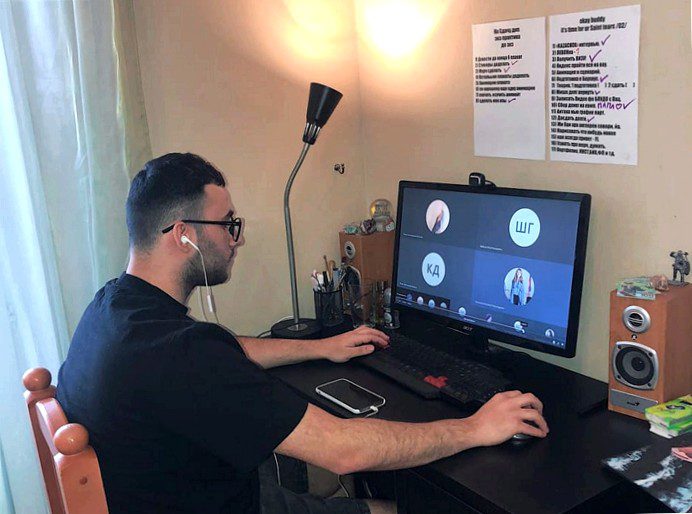Despite Corona crisis, university business continues – at home. The changeover did not always go smoothly, but without digitization there would be total standstill here. Three lecturers report on their experiences with online seminars.

“At first, some of the students didn’t take it very seriously,” says Olga Baranova, “but things quickly settled down. Now they see that we are doing normal seminars, just under different circumstances.”Like many of her colleagues at universities and colleges, the lecturer in art history and design had to switch her entire work to online courses within a short period of time because of the Corona crisis. Instead of sitting in the seminar room, students sit at home on their laptops. In professional circles, this is called e-learning. Olga Baranova teaches at IGUMO College in Moscow’s Ismajlovo district. Already in mid-March, before curfews and “Putin vacations”, the management of the university sent all students home for safety’s sake.
“We already had online materials for students on our website beforehand. In principle, we were quite well positioned,” she says, looking back on the preparatory phase. It took a day before the technology was up and running. At her university, the “Teams” software is in use. This means that not only lectures, but also seminars, in which the cooperation of the students is important, can be transferred to the Internet. “The students see me, and if I need to, I can see them too.”
“Positive sides throughout”
In her seminars on art history, she usually discusses pictures with her students. “It works very well,” says Olga Baranova. When there is practical work to be done, she photographs the students with their smartphones.
She sees positive aspects of the online seminars. “We waste less time on public transport, there’s much more room for other things.”She can imagine working like this more often. Nevertheless, she believes that direct contact is indispensable. “There are just moments when teaching that are very memorable for the students, when you look at something together or explain it, you can’t always do that online.”
Discussions get off to a difficult start
Her colleague Maria Borisova teaches psychology and is less comfortable with it. “It’s a strange situation when you ask a question and all the students just keep quiet,” she reports. “There’s never anything like this in a normal seminar.”She was thrown in at the deep end by the changeover. “I only had experience with online lectures before. The software took some getting used to, but it’s working well now,” she says.
She often has students give presentations, which are then discussed together. He says it is difficult to stimulate discussions between students, for example in groups. “It just works better in space,” says Maria Borisova. Their students are very disciplined and attend classes regularly. “But they want to get back to normal.”For the lecturer, it’s clear: “Teaching online is possible, but I prefer to do it the traditional way.”
The students have the distance instead of
Irina Tarchanova from the Pedagogical University in Yaroslavl has a similar opinion. She teaches social pedagogy and social work. Here they work with Skype and the Moodle learning platform. Discussions take place on Skype, assignments and materials are distributed via Moodle. “We didn’t have much time and had to improvise quite a bit,” she recounts. She lacks face-to-face communication. Students feel the same way. “They’re tired of the distance,” she reports. Working with Moodle is also very time-consuming, especially the written feedback eats up more time than in the seminar room.
But for all the hassle, online operations also have their curious sides. “There are also funny situations. For example, when a student presents his project and you can see his two younger brothers fighting in the background,” Irina Tarchanova says with a smile.